What are the Symbols of Buddhism (explained)?
There are numerous Buddhist symbols, and each is unique and carry a different teaching, a different message.
Buddhism is a major world religion that originated in ancient India and is based on the teachings of the Buddha, or “enlightened one.” The religion is known for its focus on personal spiritual development, meditation, and the attainment of inner peace and wisdom.
Buddhism has many symbols that are used to represent its teachings and principles, and these symbols are often found in art, architecture, and other aspects of the religion.
This page will explore some of the most important symbols of Buddhism and their meanings, providing a deeper understanding of the religion and its rich cultural heritage.
The 8 Auspicious Buddhist Symbols
The Eight Auspicious Symbols or Ashtamangala in Sanskrit are a series of eight basic Buddhist Symbols that represent the teaching of the Buddha and important spiritual concepts at the core of the Buddhist philosophy.
Later adopted by Buddhism, these eight Symbols found their origins in ancient India, and many were associated with the crownings of kings.
You may be unfamiliar with some of the Eight Auspicious Symbols, but they are present in every school of Buddhism, both as decorative art and a reminder of the Buddha’s teachings.
Let’s learn more about these Eight Auspicious Symbols.
1. The Dharma Wheel

The Dharma wheel, or Dharmachakra in Sanskrit, is probably the most famous Buddhist symbol. As one of the oldest and most important symbols of Buddhism, it symbolizes Buddha’s teachings.
In most cases, the Dharma Wheel is made of eight spokes, and three swirls at its core. Nowadays, the Dharma Wheel, it is used to represent the Buddhist religion in the same way that a cross represents Christianity or a Star of David represents Judaism.
Origin: Similar wheel symbols were found in ancient India, but the oldest depictions of the Dharma Wheel were found on pillars that were built by Emperor Ashoka (268 to 232 BCE). These pillars are a series of large columns dispersed
throughout India, built by Emperor Ashoka. As a fervent Buddhist, the Emperor built these huge pillars to spread the teaching of the Buddha in his land.
Meaning: The eight spokes or rods of the Dharma Wheel symbolize the Buddha’s Eightfold Path, and the three swirls in the middle of the wheel represent the Three Jewels of Buddhism: The Buddha (the teacher), The Dharma (the teaching) and the Sangha (the community). The rim of the Dharma Wheel symbolizes the capacity to hold all of the teachings together by practicing meditation.
2. The Endless Knot
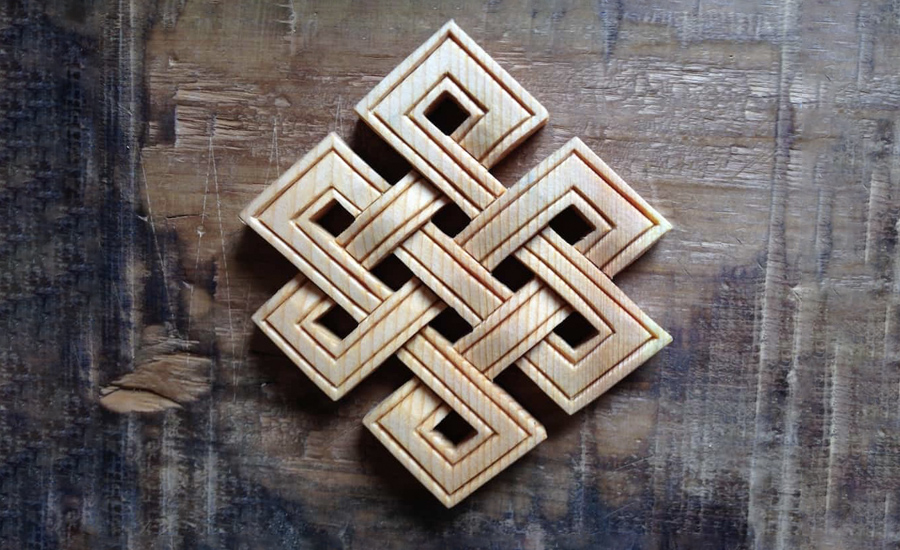
Without beginning or end, the endless knot is an intricate design composed of looping intertwined lines that folds and twist in and out of each other to create a beautiful and elaborate pattern.
Origin: The design of the Endless Knot is believed to originate from an ancient Indian symbol, the two entwined snakes.
Meaning: The Endless Knot has many significations. It symbolizes Samsara, the cycle of birth, death, and rebirth. The Endless Knot also teaches about interconnectedness, illustrating that nothing is separated from the rest, that everything is in symbiosis.
3. The Lotus Flower

Another recognizable symbol of Buddhism is the famous lotus flower. Growing in ponds, the lotus flower must make its way through muddy water in order to blossom and eventually reach the surface. Even if the lotus has its roots are in the murkiest waters, it produces the most beautiful flower.
Origin: The lotus frequently appears in Buddhist art and scriptures. The Buddha has often been depicted sitting on top of a large Lotus flower. Legend has it that when the Buddha was born, lotuses grew in his footsteps.
Meaning: In terms of symbolism, the lotus represents the purity of the body, speech, and mind – the three generators of Karma. Because the Lotus flower blossoms in muddy water, it symbolizes the purity of Nirvana (satori in Japanese) and the condition of the mind awakening through the suffering of Samsara. Because of its accurate resemblance to the human condition, the Lotus flower has long been respected in Asia.
4. The Treasure Vase

The Treasure Vase, also known as the ‘vase of inexhaustible treasures’ is a round vase with a short, slim neck, sometimes ornamented by a jewel. It is fashioned like the Kumbha, an Indian traditional Indian clay water pot.
Origin: The Treasure Vase is a very ancient traditional object that originated in India. It was believed that the Treasure Vase had the power to invite good health, happiness, wealth, and abundance and that no matter how much is taken out of it, it will always remain full.
Meaning: In Buddhism, the Treasure Vase is used to represent the wealth and abundance of the teachings transmitted to us by the Buddha. It also symbolizes that no matter how much compassion and attention we give to others, the Buddha’s teaching will remain abundant and will fill our hearts and minds.
5. Two Golden Fish
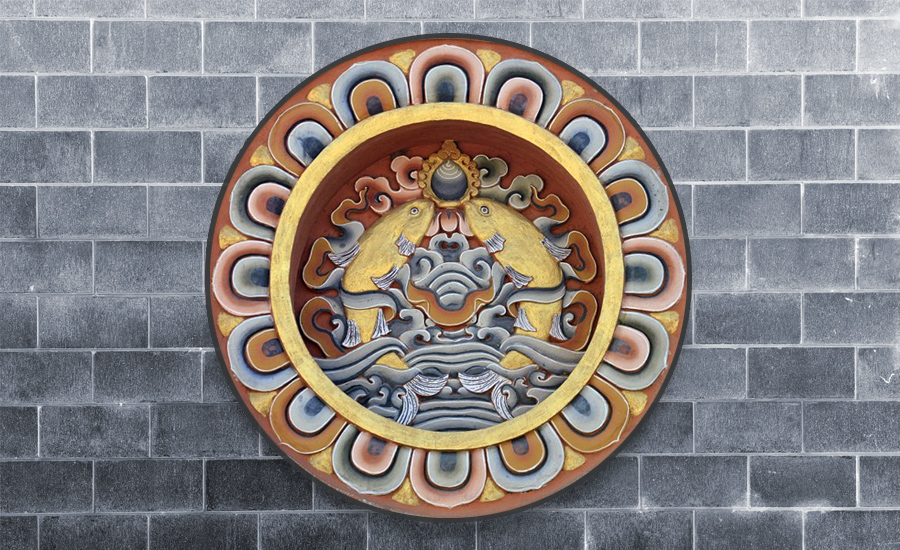
The Two Golden Fish Symbol is composed of two fishes – one male and one female – depicted standing vertically with their heads turned towards each other. The two fishes represented on the symbol are carps and are praised in Asia for their elegance, beauty, and life-span.
Origin: This ancient pre-Buddhist symbol first appeared as a representation of two sacred life-giving rivers of India that helped civilization flourish along their fertile shores: Ganga and Yamuna.
Meaning: In Buddhism, the golden fishes represent many things. First, they express happiness, as they have complete freedom in the water. Secondly, they symbolize fertility and abundance as they reproduce quite rapidly. Thirdly, they symbolize living in a state of fearlessness, without the threat of sinking in the ocean of dukkha or sufferings.
6. The Parasol

The traditional Buddhist parasol or Chatta in Sanskrit is constructed from a long sandalwood pole, which is usually decorated with a small golden lotus, a vase, and a jewel. A decorative golden crest-bar defines the parasol’s circular rim, and it is ornamented with peacock feathers, hanging jewel chains, and other pendants.
Origin: The Buddhist Parasol or umbrella is a traditional Indian symbol almost exclusively used by the royalty as a way of protection from the heat of the torrid sun.
Meaning: As a Buddhist symbol, the parasol symbolizes the Dharma that protects its practitioner from suffering, desire, anger, and ignorance. The dome of the parasol symbolizes wisdom, and the suspended skirt, compassion. Together, they represent the union of these two elements – wisdom and compassion.
7. The Conch Shell

As one of the major Buddhist symbols, the white conch is normally represented vertically, often with a silk ribbon around it.
Origin: Since time immemorial, conch shells have been used as horn trumpets. Tales of ancient India describes how each hero carried a powerful white conch shell, which often had a personal name and special powers.
Meaning: In Buddhism, the conch symbolizes the fearlessness to teach the truth of the Dharma, to awaken and to work for the good of others. The conch also symbolizes the spreading of the Buddha’s teaching, which expands in every direction, like the sound of a horn. According to Buddhism and Hinduism, the conch shell is also associated with truthful and honest speech and vitality.
8. The Banner of Victory
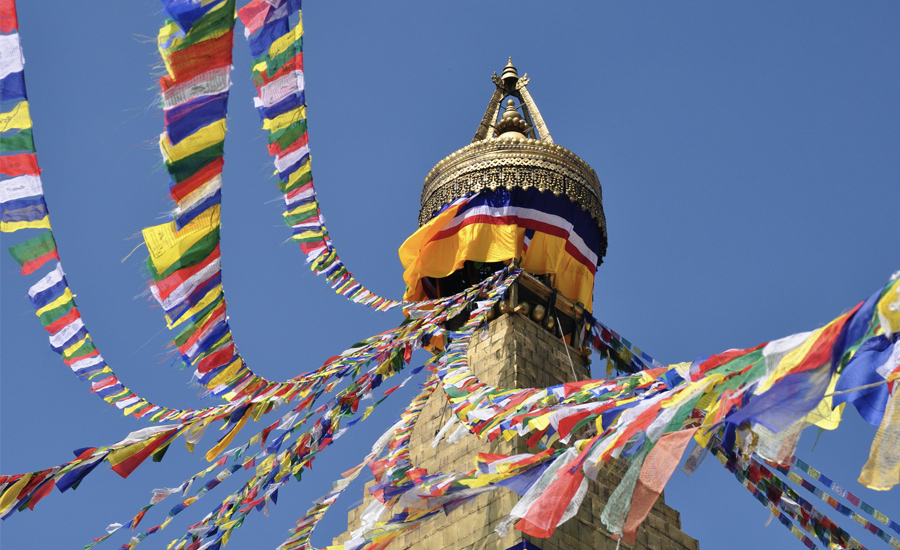
The Banner Victory, known as dhvaja in Sanskrit, simply means “flag”, “ensign” or “sign”. In its classical design, the victory banner is fashioned as a tubular ensign mounted on a long wooden pole. At the top of the banner, there is a small white parasol, surmounted by a jewel.
Origin: Originally, the victory banner was a military ensign used in ancient Indian warfare, that displayed the armories or logo of each clan.
Meaning: The victory banner was utilized by early Buddhists as a symbol of the Buddha’s awakening, and the victory of knowledge over ignorance. The banner of victory also expresses Buddha’s triumph over illusions like anger, fear, desire, greed, and pride.
Other Important Buddhist Symbols
Besides the Eight main symbols, you may have seen other Buddhist symbols found in various Asian cultures like Tibet, China, or Japan. Here are a few of them.
Shaving head
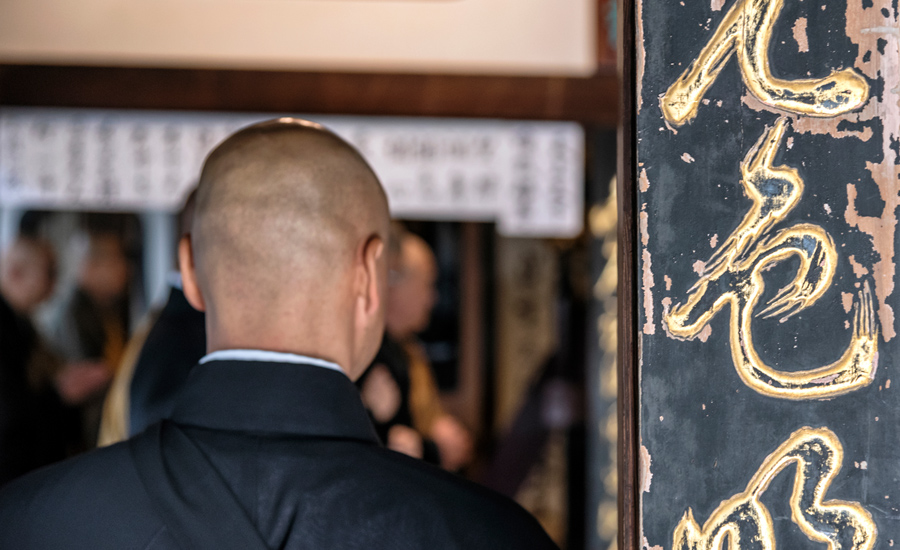
Since the time of the Buddha, shaving off the head is an ancient practice for Buddhist Monks. Buddhist monks don’t shave their heads as a fashion statement, they do so as a symbol – and reminder – of renunciation towards worldly desires and attachments. Whether a person is a man or a woman, he or she will have his or her head shaved nevertheless.
The Buddhist Robe

The robes of Buddhist monks and nuns, called kasaya in Sanskrit (kesa in Japanese), are part of a tradition going back to the time of the historical Buddha, more than two and a half millennia ago.
As a way to understand non-attachment and impermanence, the first Buddhist monks used to wear robes that were patched together from rags and discarded fabrics (damaged by rats or fire, dirtied by childbirth or menstrual blood, used to wrap the dead).
The cloth was later cleaned and dyed to a dark-orange color. As Buddhism spread to Asia, pigments extracted from local products were used to dye the robes, producing different colors towards brownish, maroon, or dark red. In countries like China, Japan, and Korea, robes are often brown, gray, blue, and even black.
The Buddhist Bell
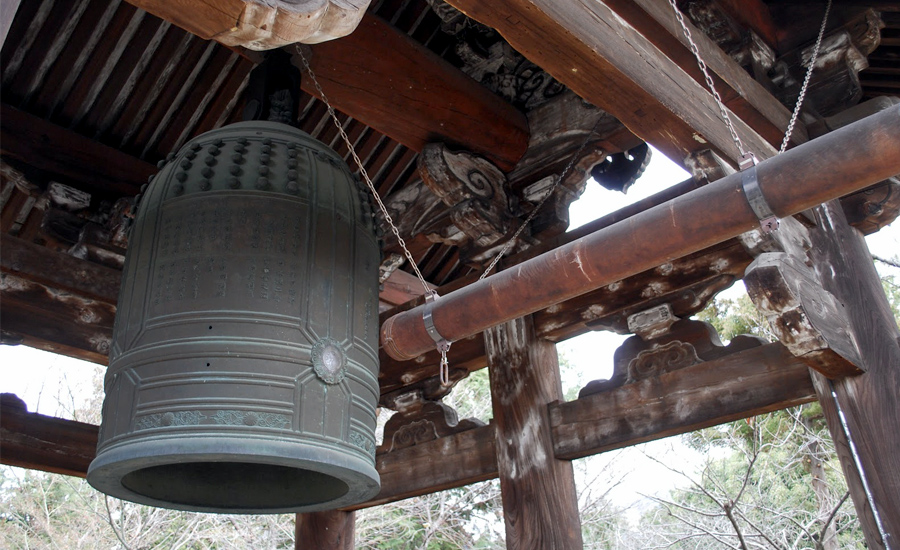
Since the Buddha’s time, bells were used to assemble monks and nuns to meditation practice. Buddhist bells represent the Buddha’s voice and the Dharma or Buddha’s teachings.
Buddhist bells come in a wide variety of sizes and styles, and many temples have bells at the entrances that one needs to ring before entering.
The Stupa

The stupa is a major form of Buddhist architecture, though it predates Buddhism. Structurally, the stupa is a hemispherical construction that is generally used as a burial monument.
Some stupas are said to contain the ashes of the Buddha and his disciples and relics or objects that belonged to them. Other stupas are commemorative and mark important events in Buddha’s life.
Like Buddhist temples, the style and look of stupas vary from country to country, but the fundamental structure remains the same.
The Bodhi Tree

The Bodhi Tree or “Tree of Awakening” is a large and fig tree under which Siddhartha Gautama – the historical Buddha – attained spiritual Awakening or Nirvana (satori in Japanese).
Located in Bodh Gaya, India, the Bodhi tree quickly became a symbol of the Buddha’s Awakening. Many Buddhist temples throughout Asia have Bodhi trees which are or are supposed to be offspring of the original tree.
The Empty Throne

The Empty Throne is an aniconic symbol that was used in early Buddhist art. Indeed, ancient Buddhist artists avoided representing the Buddha in human form.
The Empty Throne is normally represented under a parasol or a Bodhi Tree and often includes a symbol such as Buddha’s footprint or the Dharma. The Throne symbolizes Siddharta Gautama’s (a.k.a. the Buddha) royal lineage as well as the idea of the Awakened-One being the ruler of the spiritual world.
The Begging Bowl
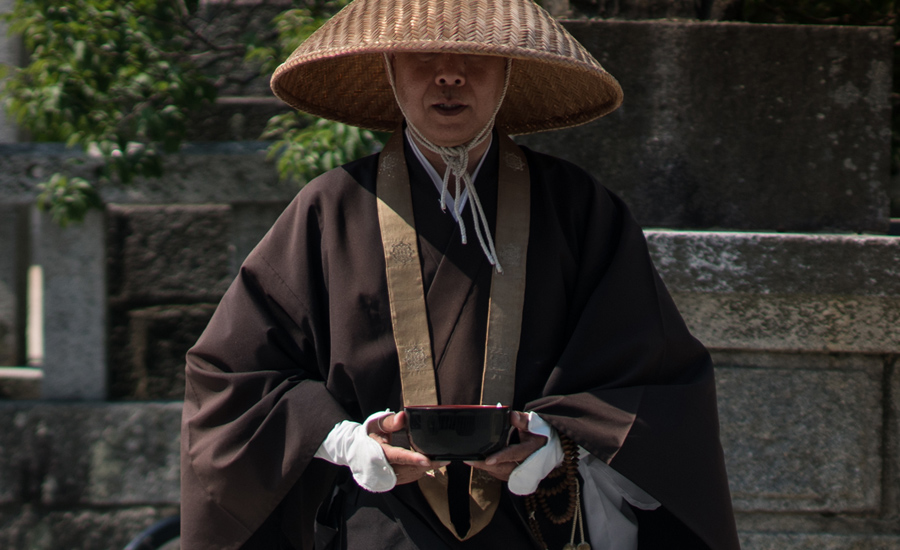
The begging bowl or alms bowl is, along with the Buddhist robes, are the very few possessions of Buddhist monks. The bowl is a practical object that is used to collect alms food or money from lay supporters.
Early in his practice, the Buddha was practicing asceticism and indulged in severe practice that involved constantly meditating, never speaking, sleeping very little, and eating only a few grains of rice a day. After indulging in the unbalanced lifestyle for a few years, he finally got sick and collapsed. He was saved by a village girl named Sujata, who offered him a bowl of milk rice.
At that moment, the Buddha understood that in order to find contentment, on ness to find a balance between opposites. The begging bowl now symbolizes the way of the middle.
The Swastika
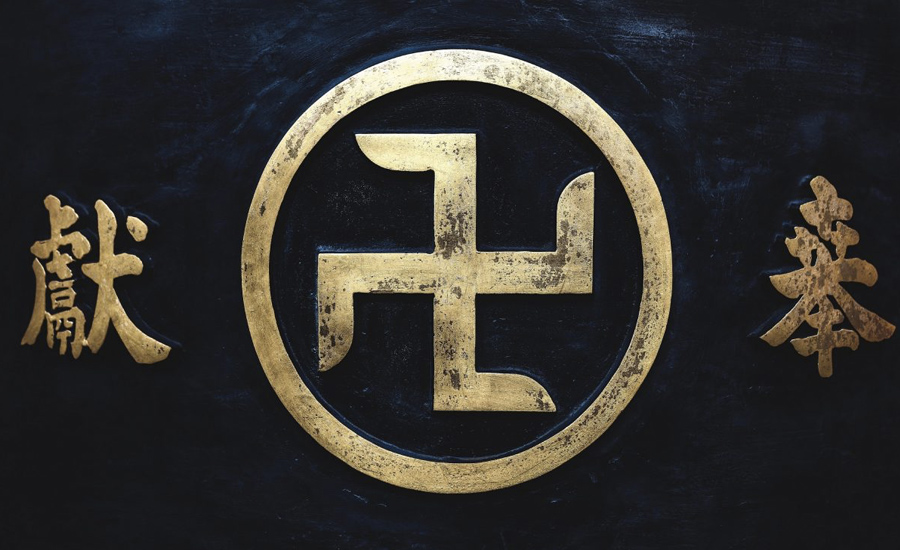
In the Western world, the swastika is unfortunately synonymous with Nazi ideology, but it is actually one of the oldest and more important spiritual symbols of India.
Used in Hinduism, Jainism, and Buddhism, the swastika represents the ongoing cycle of Samsara or rebirth. It’s four branches symbolizes the four possible places of rebirth — in the animal realm, the hell realm, the physical realm, and the spirit realm. It can often be seen imprinted on the body, palms, chest, or feet of Buddha images or statues.
Unfortunately, the Nazis literally flipped the swastika design over and made it into the symbol of hate and massacre that we all know.
The Vajra

The Vajra is a symbolic weapon that is fashioned out of brass or bronze, with four prongs at each end, representing the four noble truths. In Buddhism, the Vajra symbolizes the ability to defeat ignorance, attachment, and aversion within oneself.
The Vajra shatters people’s devious influences, afflictions, and misguided views. The Vajra is mainly used in Chinese and Tibetan Buddhism.
The Buddha’s Eyes
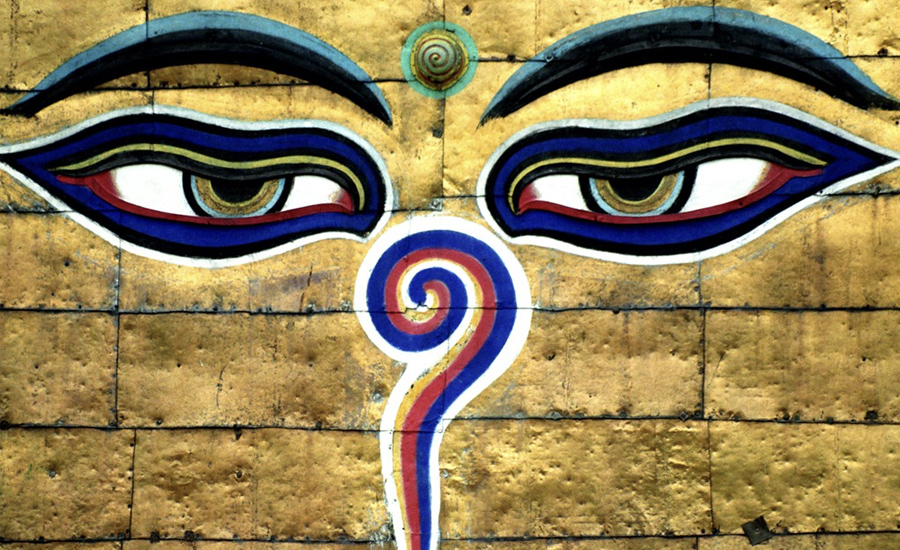
On many Buddhist stupas, statues, and monasteries from Asian countries like India, Nepal, Bhutan, Thailand and Burma, we can find a symbol composed of a pair of eyes, a dot between the eyes and a curly shape.
The two eyes (physical eyes) symbolizes the ability to see reality (the outer world), the third eye symbolizes both the Buddha’s Awakening and the Dharma, and the curly symbol resembling a question mark symbolizes the character for number one for unity to reach the Nirvana.
Fudo-Myo Statues (Acala)
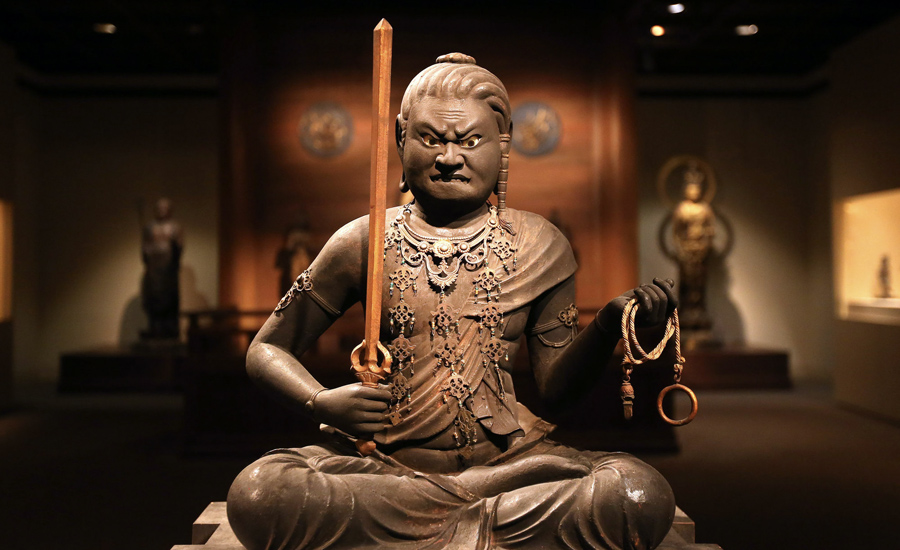
Known as the Immovable Wisdom King, Fudo-Myo (Acala in Sanskrit is the symbolic, ferocious protector of Buddhism.
Found mainly in China and Japan, Fudo-Myo carries a rope used to catch and bind evil, and a sword used to cut through ignorance. Fudo-Myo is often depicted standing or sitting on a rock, symbolizing his determination to battle evil and protect the Dharma with his immovable compassion.
Also, he is usually surrounded by flames, symbolizing the burning of anger and passion. Fudo-Myo statues can often be seen at the entrance of Zen temples.
The Enso
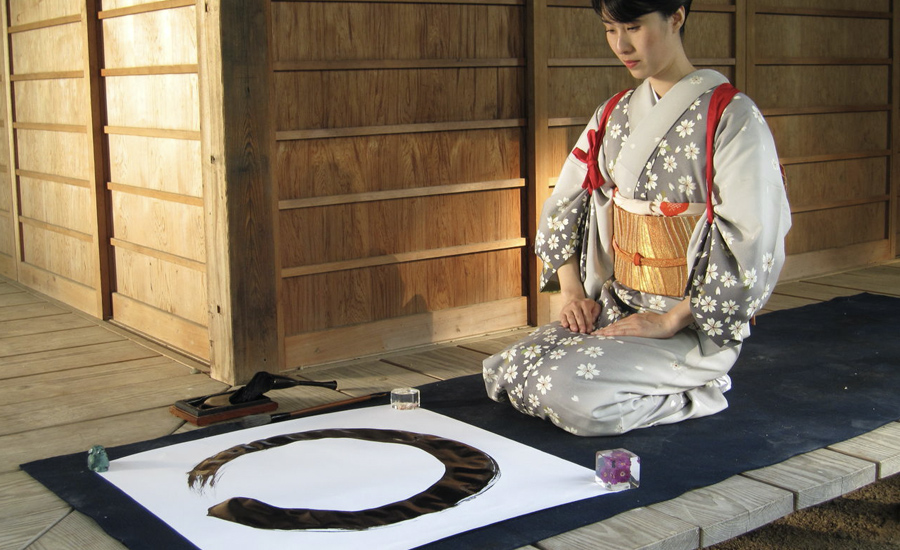
In Zen Buddhism, enso (a.k.a. the circle of enlightenment) is a circle that is hand-drawn in black ink by an artist with one spontaneous, continuous brushstroke.
Usually, the enso is painted as an open circle, free and boundless, and perfectly embodies the minimalism of Japanese aesthetics. The enso is an inclusive symbol representing enlightenment but also interdependence, the oneness of all things in life.
It’s rough, irregular shape also represents the beauty of imperfection, and reminds us that is it possible for everyone – in this lifetime – to Awaken and become free from Samsara.
The Pearl

In Buddhism, pearls are relics that can be found among the cremated ashes of Buddhist spiritual masters. It can represent the spiritual knowledge, teachings, realizations, or living essence of spiritual masters.
On a more profound level, the pearl symbolizes the virtues of wisdom and compassion, two important Buddhist concepts.
The Buddha’s Footprint
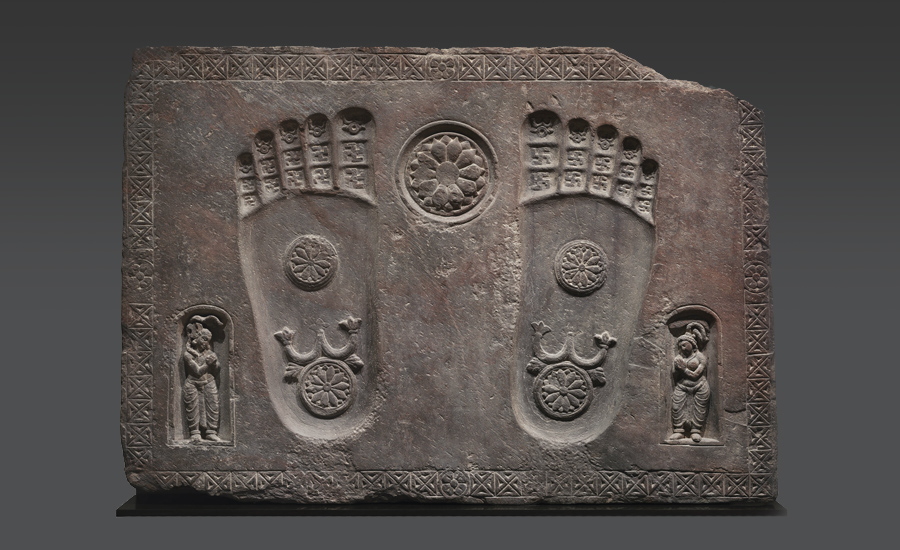
The Buddha’s Footprint or Buddhapada in Sanskrit is one of the initial representations of the Buddha in Buddhist art. It represents an imprint of Gautama Buddha’s foot or feet.
For Buddhists, the footprint is a reminder of the fact that the Buddha really existed as a human being and walked this earth.
Consequently, it also expresses the fact that the Buddha is gone, reminding us the Buddhism is about each and every one of us, not about the Buddha.
Buddhist symbolic animals & creatures
The use of animal symbols is an important part of Buddhist art and represents the notion that everything alive possesses inherent virtue and wisdom. Each animal embodies a Buddhist concept, virtue, or teaching.
The Deer

In Buddhism, the deer symbolizes harmony, peace as well as longevity. Gentle, serene, and joyful, the deers also represent innocence and purity. Historically, it was in Deer Park that the Gautama Buddha gave his first teaching.
In Buddhist art, the Buddha is frequently depicted sitting on a platform with two deer kneeling, facing one another. Some Dharma Wheels are represented featuring one deer sitting on each side of the wheel, staring unwaveringly at the wheel, with great enjoyment.
The Dragon
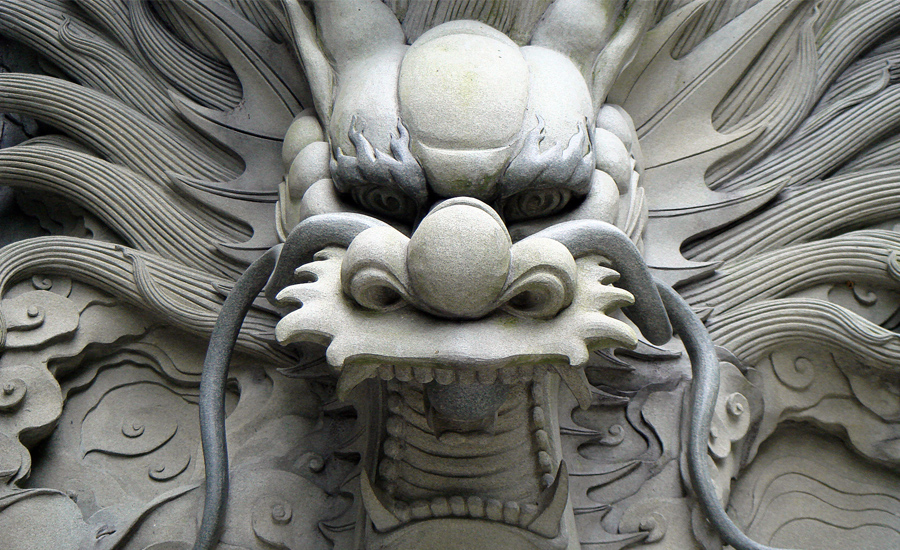
Mainly found in China, Japan, and Korea, the Dragon symbol finds its origin in the Nagas, snake-like creatures found in the Pali Canon.
As Buddhism spread through China, the metaphorical Nagas came to be replaced by the Dragon, a metaphorical creature that has been part of Chinese culture for thousands of years.
In the 6th century, Chan (later known as Zen in Japan) developed in China as the dominant Buddhist school. Traditional Buddhist symbolism got influenced by Chinese culture, and dragons started to make frequent appearances in literature and art.
With time, Chinese artists and Buddhist masters alike started using the Dragon as a symbol of enlightenment. However, the Dragon sometimes represents ourselves, our own ego. In Chan and Zen Buddhism, “meeting the Dragon in the cave” is a metaphor for facing one’s own deepest fears and obstacles and meet yourself.
The Elephant
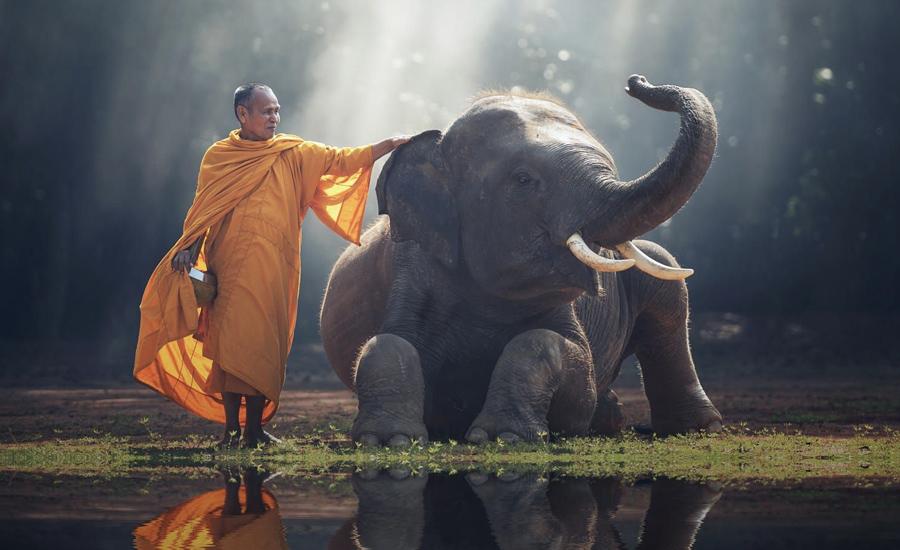
In Asia, elephants have long been symbols of grace, strength, honor, knowledge, and peace. Legends say that Queen Maya, Buddha’s mother, dreamed of a white elephant who offered her a white lotus with his trunk and entered her womb.
In Buddhism, the elephant symbolizes mental strength, and the unstoppable will to walk the path toward enlightenment. They are patient and attentive, stable, and fearless once set on a path. Their large ears also symbolize the willingness to listen to the Dharma or Buddha’s teaching.
An uncontrolled mind is often represented by a gray elephant that violently destroys anything in its path, and that is charging heads on towards suffering and pain. On the other hand, the controlled mind is symbolized by a white elephant, composed and powerful, which can be directed by will and directed toward liberation.
The Horse

Legends say that Kanthaka, Siddhartha’s swift horse that helped him escape the palace died of grief, but was reborn as a man to serve him and to help sentient beings.
In Buddhism, the horse is a symbol of loyalty, energy, and effort in practicing the Dharma and represents the enthusiastic pursuit of the Buddha’s teachings. The neigh of the horse symbolically represents the Buddha’s voice that awakens the sleepy minds to practice the Dharma.
The Lion

Referred to as “Lion of the Shakyas”, the Buddha was often represented as a Lion, an animal known for its strength, courage, and nobility. He was known for his strength and courage for attaining awakening and relieving human suffering.
In Buddhist literature, the Buddhas’ voice is designated as the “Lion’s Roar”, a powerful yet compassionate voice that is teaching the Dharma for all to hear. The Buddhas’ voice is called the “Lion’s Roar”, a powerful yet compassionate voice that is roaring out the Dharma for all to hear.
In Buddhism, statues of lions can often be found at the entrance of monasteries and temples as they serve as protectors or guardians of the Buddha and the Dharma. They can also be found being used as mounts for Buddhas and Bodhisattvas. Lion’s Roar is also a great Buddhist website that I recommend you to visit.
The Phoenix

The phoenix is a mythical animal that is strongly rooted in Chinese and Japanese culture. The phoenix is a kind and compassionate mythical bird that embodies values like dignity, integrity, and equity.
When a Dragon and a Phoenix are depicted together, they represent the Emperor and Empress and symbolizes a perfect matrimonial union. The phoenix is also commonly depicted attacking snakes with its claws and dancing with its wings wide open.
In Buddhism, the phoenix symbolizes peace and tranquility and shows only in times of peace.
The Peacock
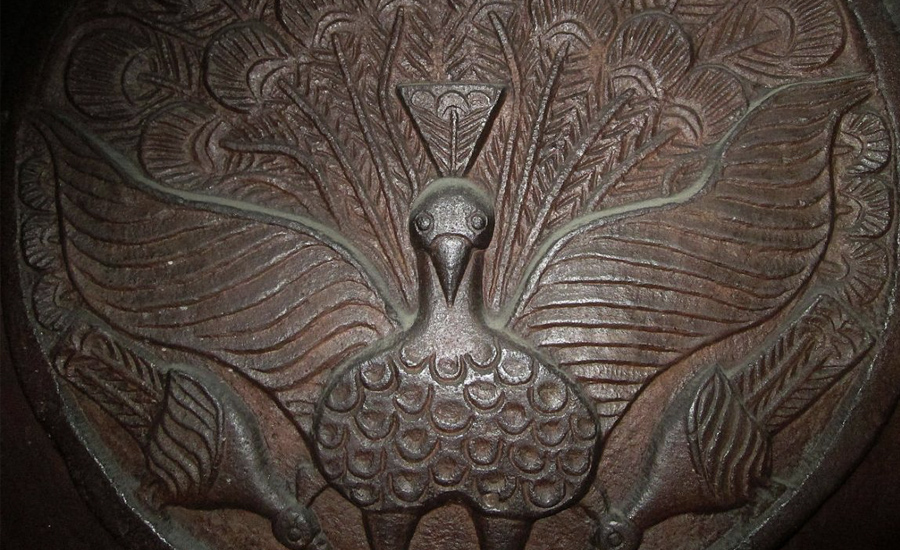
In Buddhism, the peacock represents knowledge and compassion, and it is associated with the Bodhisattvas.
When the peacock spreads its tail out, it resembles the thousand arms of Bodhisattva Avalokiteshvara. Peacocks are the mortal enemy of snakes and are capable of eating even poisonous ones. It is stated that the peacock has the ability to converts poison into nectar.
Likewise, a Bodhisattva is capable of transforming ignorance into awakening, desire into charity, and anger into kindness. In Asia, it is said that when a person is happy or has positive thoughts, his mind opens like a peacock opening his tail and displaying its brilliant hues.
The Buddhist colors
There are five official colors of Buddhism called Pancha-varna in Sanskrit. The list of the colors may change from country to country, but the number remains five.
The most common colors associated with Buddhism are Black, White, Blue, Red, Green, and Yellow. Purple is the official Japanese Buddhist color, therefore I have added it to the list.
Black
The color black represents the three poisons of hate, attachment, and ignorance – the antithesis of enlightenment.
White
White is a color that represents – as in the Western World – purity and sincerity. In Buddhism, it is also considered the color of wisdom, knowledge, and impermanence.
Blue
In Buddhism, the color blue represents inner peace, growth, and change. Blue symbolizes the transformation of kleshas (illusions) into prajna (wisdom) and knowledge.
Red
In Buddhism, the color red represents, like fire, anger, passion, attachment, and stubbornness. Red is also associated with sacredness and lifeforce.
Green
Buddhists recognize the color green as a symbol of motion, vitality, action, and is often associated with Karma. The color green also represents balance and endurance, two qualities associated with nature.
Yellow
The color yellow symbolizes the letting go of desires, renunciation, and detachment from the materialistic world. In some Asian countries, yellow is a symbol of humility, perseverance, and stability.
Purple
For a long time in Japan, the color purple was associated with royalty, wealth, and nobility. Historically in Japan, only the highest-ranked Buddhist monks wore purple robes. Nowadays, purple is the official color of Japanese Buddhism.
Conclusion
As you can see, there are many symbols in Buddhism, some of which we know here in the West, but most of which we know nothing about.
It is important to understand that these symbols are nothing more than reminders of the Dharma, and not the Dharma itself. It is perfectly okay to respect those symbols for what they represent, for the message or the symbolism that they convey, but it is important that we do not transform them into sacred, dogmatic icons.
Buddhism being the way of renunciation, we should avoid clinging or identifying to those symbols. We definitely don’t need them to find inner peace and reach Nirvana.

